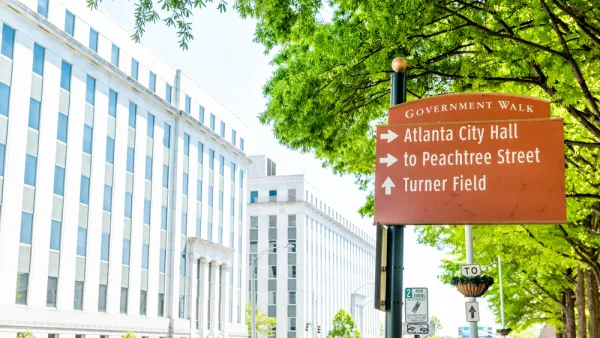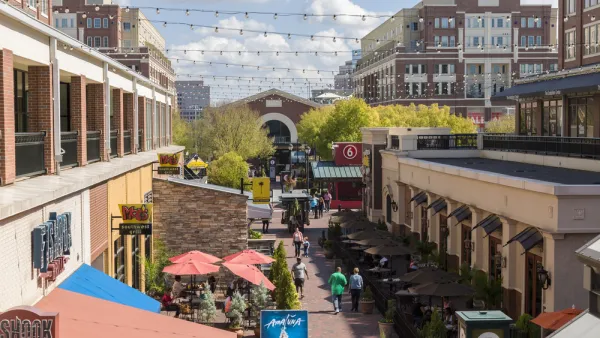How can one measure the housing affordability of a city or region? One common option is to focus on a region’s median home price (or the median home price divided by median income). I’ve used this method myself, and regional medians will often be the best tool available. But sometimes, this method leads to absurd results. For example, the median home price for metropolitan Atlanta is $150,000, which makes Atlanta seem like a remarkably affordable housing market.(1)
How can one measure the housing affordability of a city or region? One common option is to focus on a
region's median home price (or the median home price divided by median
income). I've used this method myself, and
regional medians will often be the best tool available.
But sometimes, this method leads to absurd
results. For example, the median home price for
metropolitan Atlanta is $150,000, which makes Atlanta seem like a
remarkably affordable housing market.(1)
But anyone who has actually lived in Atlanta
knows that for most of the past few years, it has been impossible to
purchase a single-family home there for $150,000, unless you are willing to live (a) at or near some fairly
unpleasant urban neighborhoods, or (b) somewhere in drive-to-qualify
country. (Of course, this has been less true for the past year or so!) In middle-class intown neighborhoods,
prices tend to start at much higher levels. For
example, in zip code 30306 (Virginia Highlands/Morningside), the median
home
value is just over $584,000.(2)
The imperfections
on relying on regional averages are often more obvious when one compares
regions. Metro Atlanta's $150,000 regional median is less than 10
percent higher than Jacksonville's $140,000 median.
But in the neighborhoods I
am most familiar with, the differences
between Jacksonville and Atlanta are much more significant. For example, let's compare two very similar
neighborhoods: Atlanta's Toco Hills and the
northern part of Jacksonville's
Mandarin. Both are middle-middle class, heavily
(by southern standards) Jewish inner suburban areas, automobile-oriented
but with some bus service.
But the cost difference between these
neighborhoods is, I think, significant. The Center for Neighborhood Technology's website suggests that in the core of Toco Hills, the average homeowner's monthly housing expenses
are in the $1300-1400
range for the cheapest block groups, and in the $1800-1900 range for the
most
expensive block groups. By contrast, my
old Jacksonville neighborhood is divided into two block groups: and in
the
cheaper of the two, the average
housing expense is under $1000.(3) A look
at zillow.com revealed pretty similar results:
single-family homes in Toco Hills start at around $200,000, while
single-family homes in Mandarin start around $135,000. (Of course, most homes in both areas are significantly more costly).
What about more upscale neighborhoods? I decided to compare two well-off areas about
an hour's walk from downtown: Atlanta's Ansley Park
and Jacksonville's
San Marco. In San Marco's most expensive
block group, the average monthly housing cost was $2113.
By contrast, in Ansley Park's
most expensive block groups, monthly housing costs were over $3000.(4)
So how would one measure affordability in an
ideal
world? In an ideal world, one would look
at neighborhoods that are really comparable, as opposed to some regional
average
that compares an incredibly wide range of neighborhoods and cities.
Of course, in the real world this can be
difficult as to be impractical: unless we are looking at cities we are
very, very familiar with, we
really can't figure out what part of city A is really similar to what
part of
city B.
So we may often have to rely on median prices as a measure of affordability.
But we should realize that in doing so, we are using an
incredibly
blunt, imperfect instrument rather than an all-purpose argument-stopper.
(1) http://www.nahb.com/reference_list.aspx?sectionID=135
(2) http://www.city-data.com/zips/30306.html
(3) I got these statistics from the Center for
Neighborhood
Technology's housing and transportation affordability websites. ( http://htaindex.cnt.org/
). The Atlanta
statistics are for block groups off LaVista
Road between Briarcliff and North Druid Hills; the
Jacksonville
statistics are for block groups off San
Jose Boulevard just north of I-295. In Jacksonville's
more expensive block group west of San Jose, housing costs are
comparable to the less expensive part of Toco Hills- a result more or
less duplicated on zillow.com. A caveat: Toco Hills becomes less expensive as you go further from synagogues. In Mandarin, the same is true as one goes east, but not in the neighborhood's western edge because of the popularity of riverfront homes.
(4) Ansley
Park is just north of 15th St.
and east of Peachtree Street. San Marco's
fanciest blocks are on the eastern
edge of the St. Johns River, just south of
Landon and west of Hendricks.

National Parks Layoffs Will Cause Communities to Lose Billions
Thousands of essential park workers were laid off this week, just before the busy spring break season.

Retro-silient?: America’s First “Eco-burb,” The Woodlands Turns 50
A master-planned community north of Houston offers lessons on green infrastructure and resilient design, but falls short of its founder’s lofty affordability and walkability goals.

Delivering for America Plan Will Downgrade Mail Service in at Least 49.5 Percent of Zip Codes
Republican and Democrat lawmakers criticize the plan for its disproportionate negative impact on rural communities.

Test News Post 1
This is a summary

Test News Headline 46
Test for the image on the front page.

Balancing Bombs and Butterflies: How the National Guard Protects a Rare Species
The National Guard at Fort Indiantown Gap uses GIS technology and land management strategies to balance military training with conservation efforts, ensuring the survival of the rare eastern regal fritillary butterfly.
Urban Design for Planners 1: Software Tools
This six-course series explores essential urban design concepts using open source software and equips planners with the tools they need to participate fully in the urban design process.
Planning for Universal Design
Learn the tools for implementing Universal Design in planning regulations.
EMC Planning Group, Inc.
Planetizen
Planetizen
Mpact (formerly Rail~Volution)
Great Falls Development Authority, Inc.
HUDs Office of Policy Development and Research
NYU Wagner Graduate School of Public Service






























